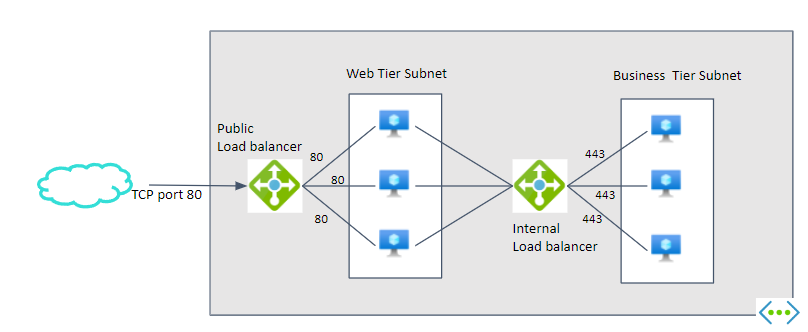EMAIL SUPPORT
dclessons@dclessons.comLOCATION
USAzure Load Balancer
Azure Load Balancer operates at Layer 4 layer of OSI model. It distributes inbound flows that arrive at the load balancer’s front end to backend pool instances , which are Azure VMs or instances in a virtual machine scale set.
There are mostly two type of Azure Load Balancer
Public Load balancer: It provides outbound connection for VMs inside your Virtual Network. These connections translate their private IP address to public IP address. Public Load Balances are used to load balance internet traffic to your VMs.
Private Load Balancer : It is used where private IPs are needed at the frontend only. Internal load balancers are used to load balance traffic inside a virtual network. A load balancer front end can be accessed from an on-premises network in a hybrid scenario.

Azure provides a suite of fully managed load-balancing solutions for your scenarios.
- If you are looking to do DNS based global routing and do not have requirements for Transport Layer Security (TLS) protocol termination ("SSL offload"), per-HTTP/HTTPS request or application-layer processing, review Traffic Manager.
- If you want to load balance between your servers in a region at the application layer, review Application Gateway.
- If you need to optimize global routing of your web traffic and optimize top-tier end-user performance and reliability through quick global failover.
Azure Load Balancer Use:
With Azure Load Balancer, you can scale your applications and create highly available services. Load balancer supports both inbound and outbound scenarios. Load balancer provides low latency and high throughput, and scales up to millions of flows for all TCP and UDP applications.





LEAVE A COMMENT
Please login here to comment.